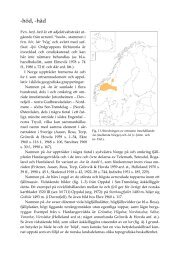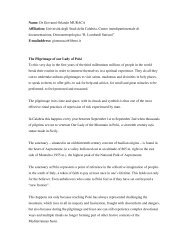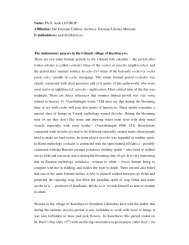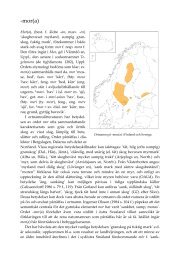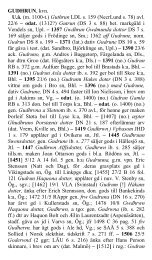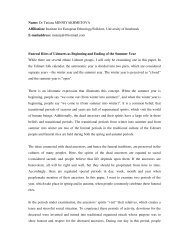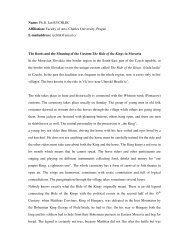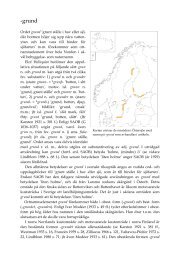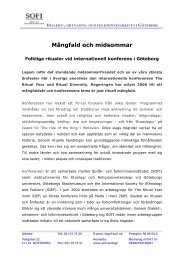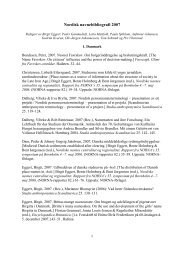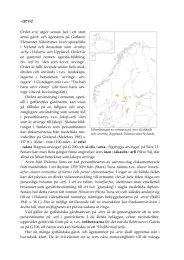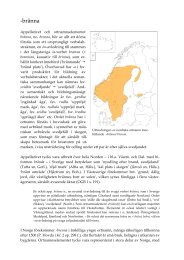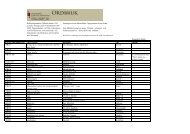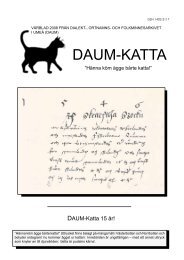NORNA-RAPPORTER 88 Binamn. Uppkomst, bildning, terminologi ...
NORNA-RAPPORTER 88 Binamn. Uppkomst, bildning, terminologi ...
NORNA-RAPPORTER 88 Binamn. Uppkomst, bildning, terminologi ...
Create successful ePaper yourself
Turn your PDF publications into a flip-book with our unique Google optimized e-Paper software.
Coming to grips with the multifacetedness of bynames 43<br />
in «The byname Agkirman goes back to MHG ackerman ‘farmer, husbandman’»,<br />
Hellegrave in «What do we know about Cristoffel’s byname Hellegrave?»,<br />
(2) use of bynames in spoken and written communication,<br />
(3) use of bynames as dependent or independent units.<br />
When bynames stand alone as subject or object, they are independent, e.g. Barbarossa<br />
in 1543 «Somme thinkith that Barbarossa wil go to Alger» (SP, p.<br />
537). When they occur in apposition to the main name, they are dependent, e.g.<br />
Barbarossa in 1656 «a Religious Order, instituted about the year 1166 by certain<br />
persons exiled by Fredericus Barbarossa» (Gloss., s.v. Humiliates).<br />
Now about the grammar of bynames. Grammatical facets include the following<br />
lexical structures (for this term, see Brendler 2006, p. 159) of bynames:<br />
Firstly, phonology (= phonological structure).<br />
Secondly, graphology (= graphological structure).<br />
Thirdly, morphology (= morphological structure) which comprises<br />
(1) inflexion (= inflexional structure),<br />
(2) word-formation (= word-formational structure) including<br />
(a) word-formation of byname formation,<br />
(b) word-formation of byname use.<br />
Fourthly, syntax (= syntactic structure).<br />
Fifthly, textology (= textological structure).<br />
Sixthly, semantics (= semantic structure). This is one of the most challenging<br />
areas of research into byname grammar and one of great complexity.<br />
So we can distinguish:<br />
(1) semantics of byname formation, which includes<br />
(a) word-formational denotation,<br />
(b) descriptive connotations (the literal reading of bynames at/for the time<br />
of their formation),<br />
(c) motivational connotations,<br />
(d) expressive connotations,<br />
(2) lexical semantics of bynames, including<br />
(a) denotation,<br />
(b) word-formational connotations,<br />
(c) personal connotations,<br />
(3) semantics of byname use (= contextual semantics),<br />
(4) development/dynamics of byname semantics,<br />
(5) ambiguity of bynames, which is concerned with the problem of homonymy<br />
versus polysemy, and<br />
(6) concerns the question if there is synonymy and antonymy in bynames.<br />
Needless to say, the autonomously presented structures are actually interdependently<br />
autonomous. They are facets of the gem, that is, parts of the whole. It is,



